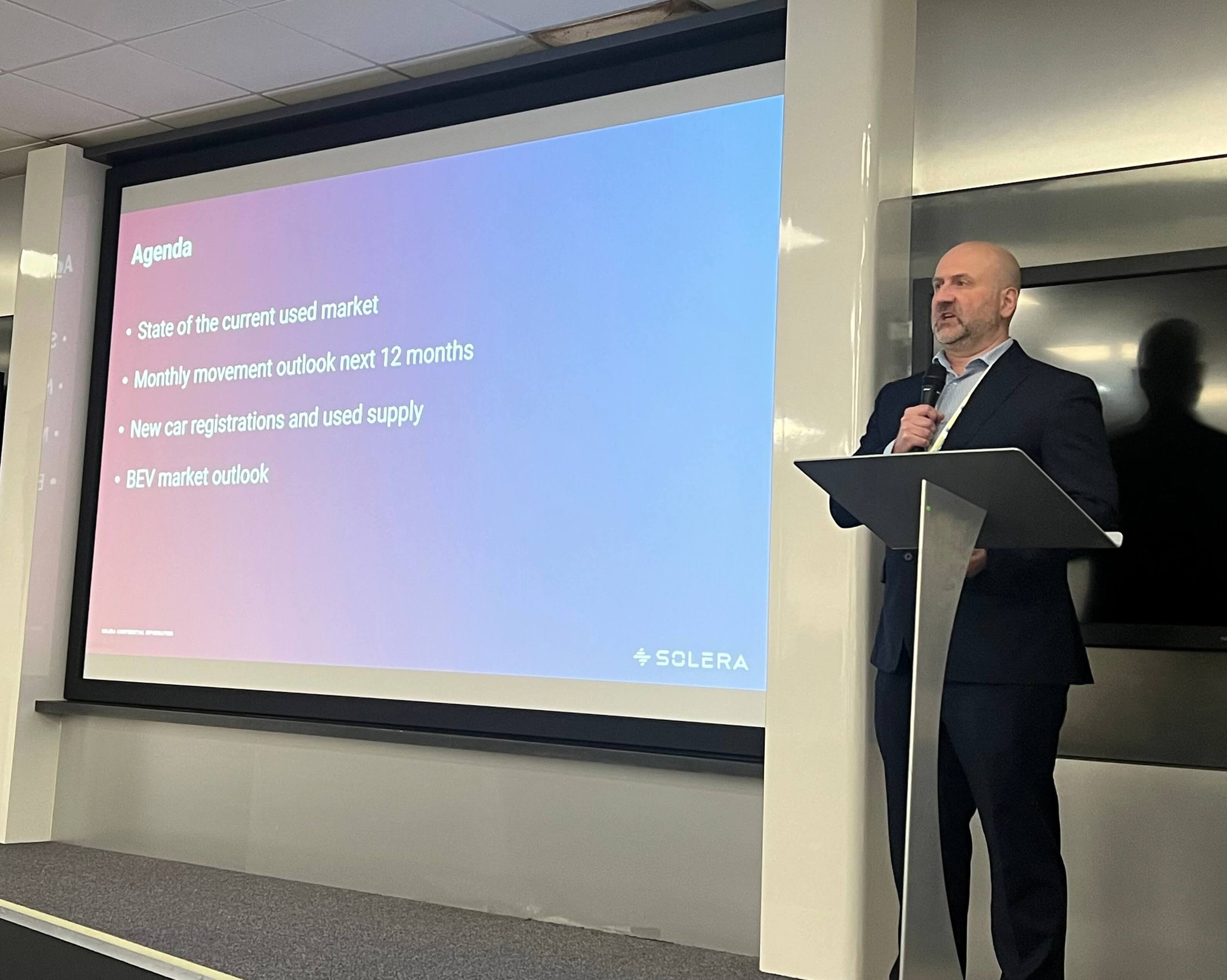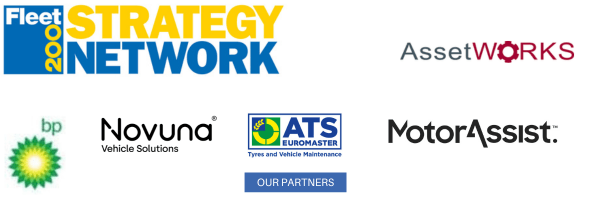
Mass BEV adoption will only be possible if several factors come into play – and understanding the market is a challenge because of unprecedented influences need considering.
This is the view of CAP HPI senior consultant Matt Freeman (pictured) speaking at the December meeting of the Fleet200 Strategy Network in a presentation aimed at providing insight into future EV residual values (RVs) and the implications for fleet decision-makers in the process of transitioning from ICE vehicles.
The ICE used market
The price of used cars will continue to be higher than the seasonal norm, by typically a third of the value seen pre-Covid pandemic. “And it will continue to be so”, due to the impact of new car supply shortages, keeping residuals 31% higher than expected, Freeman said.
For example, a mid-market petrol hatchback, after three years/30,000 miles, would normally be worth about £9,000. Now it’s worth between £11,000 and £12,000.
The electric market has operated differently. EV values didn’t rise as high as ICE during the pandemic in 2021 and fell earlier and faster in 2022 and beyond.
The next 12 months
CAP HPI is expecting to see continued reductions in values, a little worse than the expected seasonal changes at the start of 2024, but then an improvement on the norm as the year progresses.
The models that have seen the largest decreases are likely to stabilise, while those that haven’t will see some more significant corrections in value as continued stock shortages bite.
Market assumptions
Manufacturer supply will improve.
The new car market in 2023 is predicted to finish at 1.9 million units, two million in 2024 and 2.3m in 2025. The UK will probably never see a 2.7m market again, Freeman said because of changing technology and ownership structures.
CAP believes there are 2.6m units “missing from the marketplace”, particularly in the fleet sector as operating cycles have extended beyond the traditional three years to between three and four years. Pre-Covid, 4% of stock was being remarketed at for and five years old, about 25% at two-to-three years old.
These proportions have now flipped, with a significant increase in older stock, that has yet to enter the used market.
Implications for the battery EV (BEV) market
“This is a developing marketplace – it’s new technology for new customers, with a new way of driving and ownership models. So, we’re seeing a lot of differences between BEV and ICE vehicles.”
In a comparison of about 55 new and used electric vehicles (excluding niche models) and their ICE equivalents, CAP is seeing 12-month old EVs with a premium of around 4% over their ICE equivalent. But as the vehicles age this positive “turns negative”, from 24 months (-0.5%), to -12% in four years and -14% at five years.
But there “are no real trends”.
The influence of ‘tech’ on RV
Example (12 months/10,000 miles)
Audi Q7 55 TFSI Quattro S Line Tiptronic 340bhp (2019 – current) petrol: used value £44,100
Audi e-tron estate 300kW 55 Quattro 95kWh S Line Auto 408bhp (2018 – 2023): used value = £37,100
Audi Q8 e-tron estate250kW 50 Quattro 95kWh S Line Auto 340bhp (2022 – current): used value = £51,400
Therefore, the older e-tron has a value penalty of £7,000 (16%); but the newer e-tron estate has a premium of £7,300 (17%), which CAP puts down to a new influencing factor in the market, the rapid advance in technology prevalent in BEVs.
“There wasn’t anywhere near the rapid technology development in ICE vehicles we’re now seeing in BEVs”, Freeman said. And it’s what consumers are beginning to judge vehicles on – for example, time to charge and range - as opposed to transitional measures such as horsepower and acceleration.
This will become a consistent, leading factor in the market.
Another impact of BEVs is on model mix.
Superminis and lower medium cars make up the larger ICE segments (34% each), whereas superminis and the upper-medium segments dominate in the BEV market (29% and 39% share) in the period 2009 to 2023.
But this is going to change.
The upper medium mix will fall as manufacturers are able to fit greater capacity, smaller batteries in smaller cars.
Citing IHS Automotive figures, the proportion of larger vehicles is forecast to reduce by 16% while superminis increase by 16% to 2030.
The impact of the Chinese
CAP HPI expects at least 45 new models to come to the UK market from Chinese manufacturers, together with an expanding BEV offering from the likes of Polestar, Fisker and Smart in the next two years.
China is the biggest market for BEVs in the world. It is not as buoyant as it was, Freeman said, and it has a lot of production capacity to satisfy, so there is considerable incentive for its companies to start exporting to Europe and the UK.
And they are not planning on being bit players. Their volume aspirations are “significant”.
Other factors influencing the BEV marketplace include taxation and other incentives to get drivers to choose electric over ICE vehicles.
These include:
- purchase grants for vans, wheelchair accessible vehicles, trucks, motorcycles and mopeds and taxis
- taxation benefits - zero-rated VED, zero expensive car supplements and low-rate BIK
- infrastructure grants – residential and commercial charge point schemes
- other benefits – reduced price parking permits, cheaper public parking, and access to bus lanes experiments
- driving environments – clean air, ultra low emission and low emission zones.
All the above, Freeman said, will push people into the used BEV market.
Plus, a new factor will start to be considered by buyers that has traditionally been ignored in purchase decisions on petrol or diesel cars – total cost of ownership. Costs of particular focus will be taxation, insurance and tyre costs.
Factors required to find balance in the new and used BEV markets
“The BEV market is very young, representing just 3% of retail advertising. But it’s key to remember that if we’re going to have mass BEV adoption we need price parity in the new and used market. This creates a problem for manufacturers as they are expensive to produce and for fleets as they are expensive to buy and you expect a reasonable RV on defleet.
“So, we must find ways of balancing out strong RVs to support the new market and making used BEVs affordable.”
Factors required to strike a balance in the new and used markets:
- Providing more cars used buyers want: smaller segment cars and lower-cost vehicles from familiar brands and models with Chinese and Asian brands driving this
- Build consumer confidence: stronger warranties and the familiarisation of technology,
- More control for longer – more used car leasing, used car PCPs and car subscription offers.


















Login to comment
Comments
No comments have been made yet.